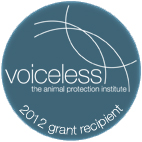As I write this, I am fifteen hours away from my arrival in Sydney. I am in Los Angeles, which means, I am nowhere at all. When someone says that they are from L.A., or live in L.A., or going to L.A., that person should be required to give exact coordinates. No one block, neighborhood, or zip code represents the whole: synecdoche is not the trope for L.A. The city multiplies, a self-replicating virus, and about all you can say of it in toto is that it’s dirty, there are palm trees, and one can go thirty miles without seeing even a dog. The anthropocentric machine began with Spanish missionaries, who planted the tall, ornamental palm trees that L.A. became known for, and eventually grassland, scrub, and woodland gave way to a strange sort of landscape, overlaid onto the region by virtue of irrigation. Sprawl is not the word for the vast armature of L.A.’s freeway system: to say “sprawl” and adequately represent the reach of what we call 'L.A.', one would have to invent syllables to plop in the middle of it -- in the manner of someone from the deep South – or one would have to not say it at all, but trumpet it, an open blow improvisation laid down in the middle, one that takes hours, so that the only person left standing in the bar is that joyous trumpeter – everyone else laid out drunk on the floor.
As though to escape the anthropocentric machine, Angelenos bunch up against the shore, huddling there with shopping carts, BMWs, graffiti cans, surf boards, and rollercoaster tickets. It seems not even passerines can countenance this, for I haven’t heard any at all. Perhaps they have made use of the low-lying buildings, nesting and singing in the corners of the flat roofs or perhaps the buildings confuse them: I ask myself what these shapes mean in a passerine world. Skyscrapers at least make for clouds and sky; ramblers hunker down like mounds. What in the natural landscape exists at the height of these mid-level buildings, except buildings? Trees, perhaps, but trees are not, so far as I know, square.
My bodily disorientation in this place called L.A. is perhaps why, when I travel here, I feel little but depressed. By the time I get here, from Minneapolis, a mere three-hour flight, I am also usually in pain. But I’m not always: the trouble with a pain syndrome is that it expresses itself unpredictably. It’s not a matter of figuring out what’s wrong and then working out the equipment or assistance to make do. Last night, my shoulder subluxed; today, the nerves between my first rib and clavicle are compressed, and my hand is surging with the tingles. So far, my intestines aren’t painfully spasming, but I feel like throwing up.
The uncertainty of this place, Los Angeles, its refusal to be named, exteriorizes the uncertainty within my body. The one thing I am certain of: pain.
There are many reasons why, five years ago, I turned to face the anthropocentric machine: what it had been doing, and keeps doing, to nonhuman animals, the suffering, the death. But it coincides with the time when pain began to most fully articulate itself through my body, describing a topology of extremes. The communion I had felt with the natural world and with other animals transformed under the sign of pain into ethics, and with ethics, action.
Synecdoche attends the anthropocentric machine: literature breaks down nonhuman animal bodies, represents them as parts: eyes, muzzle, or tail, it depends on the species. The anthropocentric machine gives rise to isms besides speciesism: it trains its violent, rupturing eye on other bodies that do not conform to 'normalcy,' including the bodies of persons with disabilities. It demands that we fix ourselves, and if we cannot fix ourselves sufficiently, it will find ways to exclude us. Ableism expresses itself through our language, just as speciesism does: cattle become the synecdochic 'head of cattle,' chicken becomes parts like fryers and breasts; disabled bodies become the nonstandard in expressions such as 'I see,' 'let us illuminate the concept,' and 'I was blind' – the implication being that knowing is seeing, and those who don’t see don’t know.
Literature informs, guides, and challenges our conceptions of the world as much as marketing campaigns and books of law. For those reasons, I have conceptualized The After Coetzee Reader and The Disabled Vegan Reader -- two projects that seek to bring excluded bodies back. Our bodies are a way of knowing, but each being’s body has its own way of knowing. Individuals within a species are as different from one another as they are from other species. Multiplicity offers us a way to push back the anthropocentric machine.
Time to board my flight to Sydney. I sometimes think, with Derrida, that a deep originary lack informs humans’ conceptions of ourselves, enduring in our need to define ourselves against other animals, under the synecdochic sign of 'Animal.' This airplane may outdo birds in size and speed, but it will never know the sky as they do.

 RSS Feed
RSS Feed